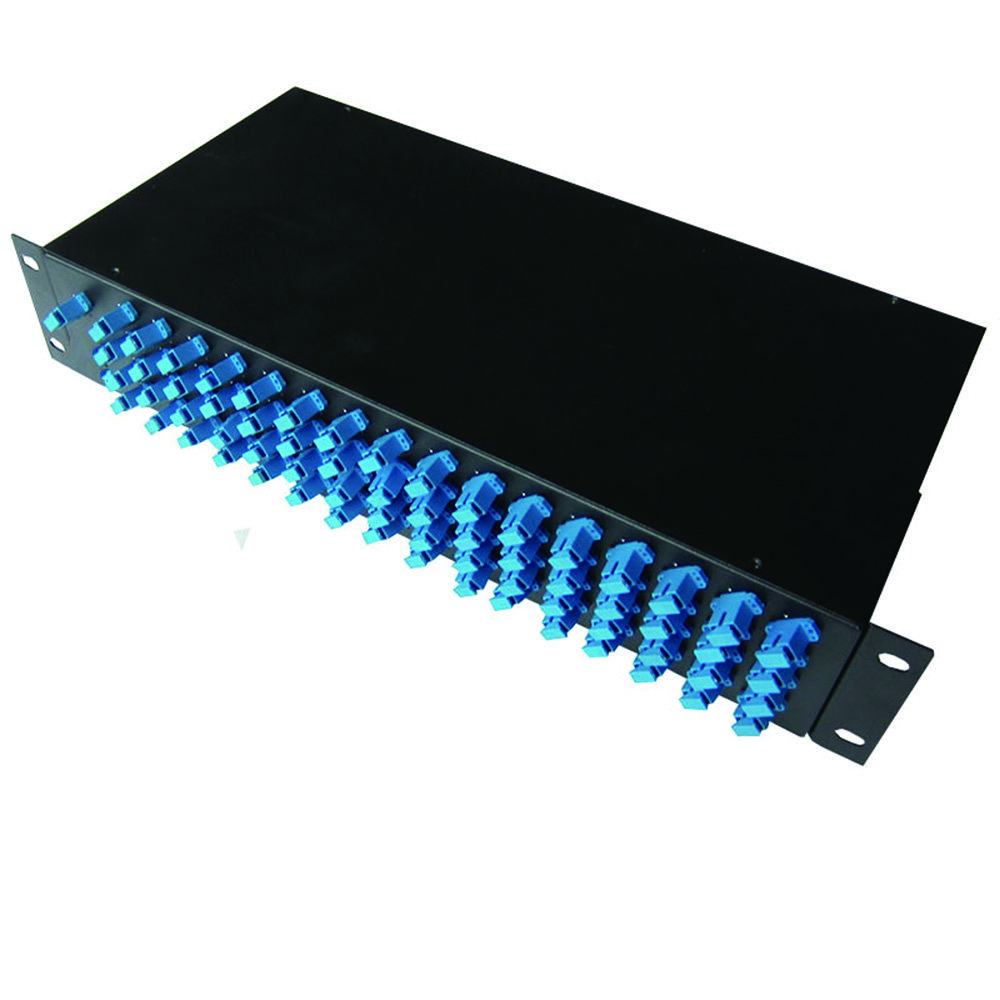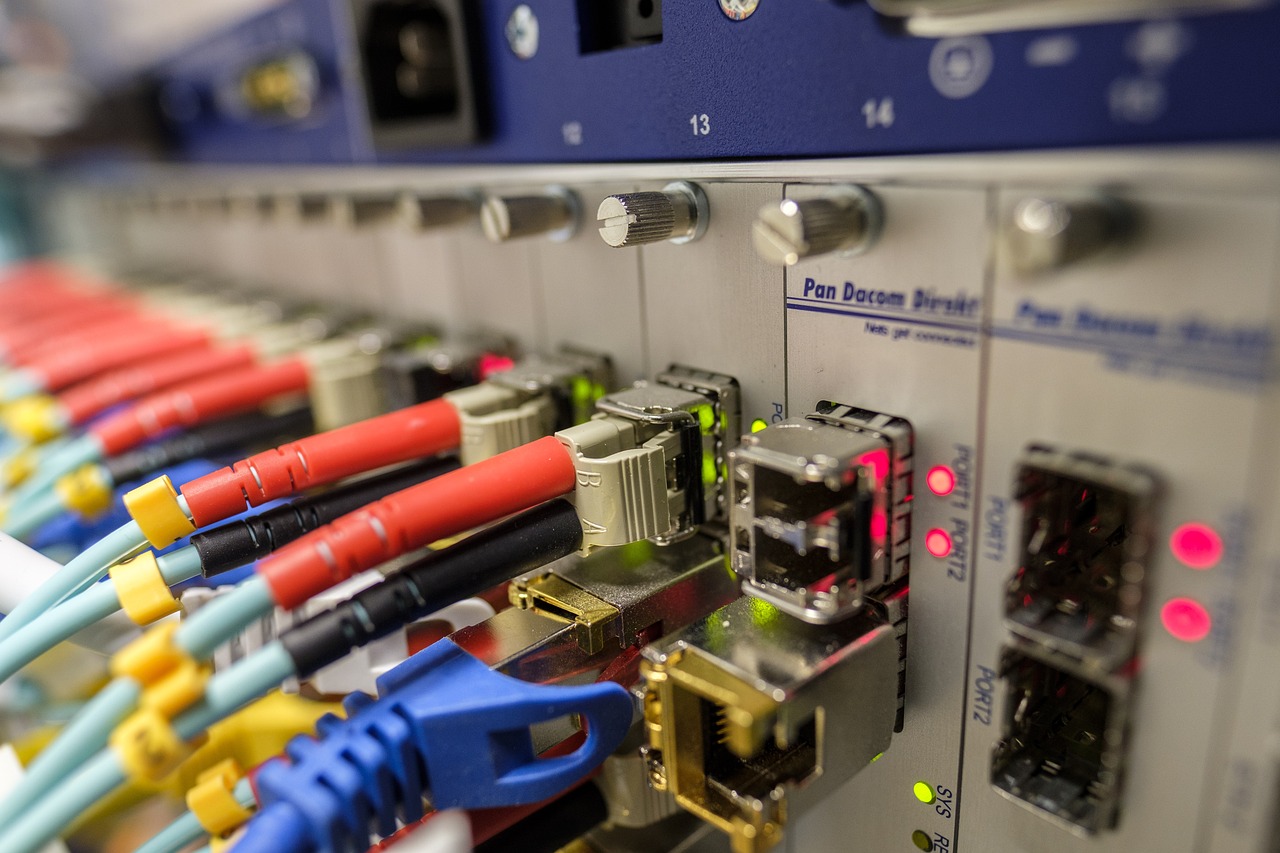5 Benefits of Using 1*64 Drawer Type Fiber Optic Patch Panel

Introduction to the World of Fiber Optics and Patch Panels
In the realm of modern networking, Fiber Optic technology plays a pivotal role in ensuring high-speed data transmission. A Fiber Optic Patch Panel serves as a crucial component within this landscape, providing a centralized location for organizing and managing fiber optic cables. Essentially, it acts as a hub that allows network technicians to connect different devices together through the use of fiber optic cables.
Now, you might wonder, what sets the Drawer Type design apart from other patch panels? The answer lies in its unique advantages. Unlike traditional fixed panels, drawer type patch panels offer enhanced flexibility and accessibility. This design allows for easy installation and maintenance, making it an ideal choice for networks that require frequent adjustments or upgrades.
1. Enhanced Organization and Accessibility
When it comes to managing a network's infrastructure, the organization is key. Fiber optic cables are the lifelines of modern networking, and keeping them tidy and easily accessible is crucial for maintaining an efficient system. This is where the Drawer Type fiber optic patch panel truly shines.
Keeping Fiber Optic Cables Tidy
With traditional fixed patch panels, cable management can often become a tangled mess, leading to difficulties in identifying and tracing specific cables. However, the Drawer Type design revolutionizes this aspect by providing a neat and orderly arrangement of fiber optic cables. The sliding drawers allow for systematic segregation of cables, minimizing the risk of tangling or damage during maintenance or reconfiguration.
Quick and Easy Access
One of the standout advantages of Drawer Type panels is the unparalleled convenience they offer in terms of access. When network technicians need to make adjustments or troubleshoot connectivity issues, the sliding mechanism allows for swift and hassle-free access to individual cables. This not only saves time but also reduces the likelihood of errors during maintenance tasks.
2. Compatibility with Single Mode and Multi Mode Fibers
Understanding Single Mode and Multi Mode Fibers
When delving into the world of Fiber Optic networking, it's essential to grasp the distinction between Single mode and Multi mode fibers. Single mode fibers are designed to carry a single ray of light, resulting in a higher transmission speed over longer distances. On the other hand, Multi mode fibers can carry multiple light rays simultaneously, making them suitable for shorter distances within data centers and buildings.
The Importance of Compatibility
The compatibility of networking components with both Single mode and Multi mode fibers is paramount for ensuring seamless connectivity and operational efficiency. A versatile Patch Panel that supports both types of fibers eliminates the need for separate infrastructure setups, streamlining network management and reducing potential points of failure.
How 1*64 Drawer Type Patch Panel Supports Both
The 1*64 Drawer Type Fiber Optic Patch Panel stands out for its remarkable adaptability to various fiber types, including both Single mode and Multi mode fibers. This flexibility is a game-changer in the realm of fiber optic networking, as it offers network administrators the freedom to integrate diverse fiber types without constraints.
Flexibility in Fiber Optic Networking
By accommodating both Single mode and Multi mode fibers, the 1*64 Drawer Type Patch Panel empowers organizations to construct agile and future-proof networks. This adaptability not only simplifies initial installations but also facilitates seamless expansions or modifications as network requirements evolve over time.
3. Easy Installation and Maintenance
When it comes to setting up a Fiber Optic network, the ease of installation and maintenance is a critical factor to consider. The Drawer Type Fiber Optic Patch Panel excels in simplifying the setup process and ensuring hassle-free maintenance, making it an ideal choice for network administrators.
Simplifying the Setup Process
The Drawer Type design streamlines the setup process by offering unparalleled ease when adding or removing cables. Unlike traditional fixed panels that may require complex maneuvers to adjust cabling, the sliding drawers of the Drawer Type Patch Panel provide a straightforward approach to cable management. This not only reduces installation time but also minimizes the likelihood of errors during setup, contributing to a more efficient and reliable network infrastructure.
Hassle-Free Maintenance
Accessibility is key when it comes to maintaining a fiber optic network, and the Drawer Type Fiber Optic Patch Panel delivers on this front. Whether it's repairs, upgrades, or routine maintenance tasks, having easy access to the cables and connectors is essential for minimizing downtime and ensuring consistent performance. The sliding mechanism of the patch panel allows for swift and convenient access, enabling technicians to carry out necessary maintenance procedures with efficiency and precision.
By facilitating quick additions or removals of cables during installation.
Ensuring accessibility for repairs and upgrades through its sliding mechanism.
4. Improved Network Performance
In the realm of Fiber Optic networking, the performance of the network is a critical aspect that directly impacts operational efficiency and user experience. The utilization of a well-organized and efficient Patch Panel can significantly contribute to enhancing network performance.
Enhancing Signal Quality
The structured arrangement of cables within a Drawer Type Patch Panel plays a pivotal role in maintaining signal quality. By neatly segregating Fiber Optic cables and minimizing potential interference, the patch panel ensures that signals travel through the network with minimal degradation. This organized cabling not only preserves signal integrity but also reduces the likelihood of data loss or transmission errors, ultimately leading to a more reliable and consistent network performance.
The Impact of Organized Cabling
The impact of organized cabling on network performance cannot be overstated. With a Drawer Type Patch Panel, each cable is systematically managed, eliminating the risk of tangles or accidental disconnections that could disrupt signal flow. This meticulous organization contributes to a stable and robust network infrastructure, providing users with uninterrupted access to high-speed data transmission and communication services.
Reducing Downtime
Downtime in a network environment can lead to significant productivity losses and operational disruptions. The quick access facilitated by the sliding mechanism of a Drawer Type Patch Panel proves instrumental in minimizing downtime through efficient troubleshooting and maintenance procedures.
How Quick Access Aids in Troubleshooting
When network issues arise, swift identification and resolution are crucial in minimizing downtime. The accessibility offered by the sliding drawers allows technicians to promptly locate and address connectivity issues without extensive disruptions to the entire network. This agility in troubleshooting not only accelerates issue resolution but also mitigates the impact on overall network operations, ensuring seamless continuity of services for end-users.
By maintaining signal quality through organized cabling.
By reducing downtime via quick access for troubleshooting.
5. Cost-Effectiveness Over Time
As network infrastructures continue to evolve, the long-term cost implications of choosing the right Fiber Optic Patch Panel cannot be overlooked. The Drawer Type Fiber Optic Patch Panel offers significant advantages in terms of cost-effectiveness over time, contributing to both immediate and future savings.
Long-Term Savings
Minimizing the Need for Future Cable Runs
The adaptability and scalability of a 1*64 Drawer Type Patch Panel play a pivotal role in reducing the necessity for extensive future cable runs. By accommodating a large number of fiber connections within a single panel, it eliminates the need for additional infrastructure expansion in the foreseeable future. This not only saves on material costs but also minimizes the labor-intensive process of deploying new cables, translating into substantial long-term savings for network deployment and maintenance.
Protecting Your Investment
How Durability and Flexibility Contribute to Cost Savings
The durability and flexibility inherent in a Drawer Type Fiber Optic Patch Panel safeguard your investment by minimizing the risk of premature replacements or upgrades. With robust construction and adaptable design, these patch panels are built to withstand evolving networking demands without requiring frequent replacements. This longevity translates into cost savings by reducing the frequency of equipment refresh cycles and ensuring that your network infrastructure remains efficient and reliable over an extended period.
In summary, opting for a 1*64 Drawer Type Fiber Optic Patch Panel not only delivers immediate benefits but also sets the stage for sustainable cost-effectiveness throughout the lifecycle of your network infrastructure.
By minimizing the need for future cable runs through scalable design.
How durability and flexibility contribute to long-term cost savings.
See Also
Essential Characteristics of 144 Cores, 1U, 19” MPO-LC, OM4 Multimode Fiber Optic Patch Panel
Insight into the 72 Fibers and Rack Mount for Fiber Optic Patch Panel Installation
Investigating the Characteristics of a Standard 19 Inch Fiber Optical Distribution Frame
Top Offers on LC UPC to SC APC Fiber Optic Patch Cables for Indoor Armored Use


